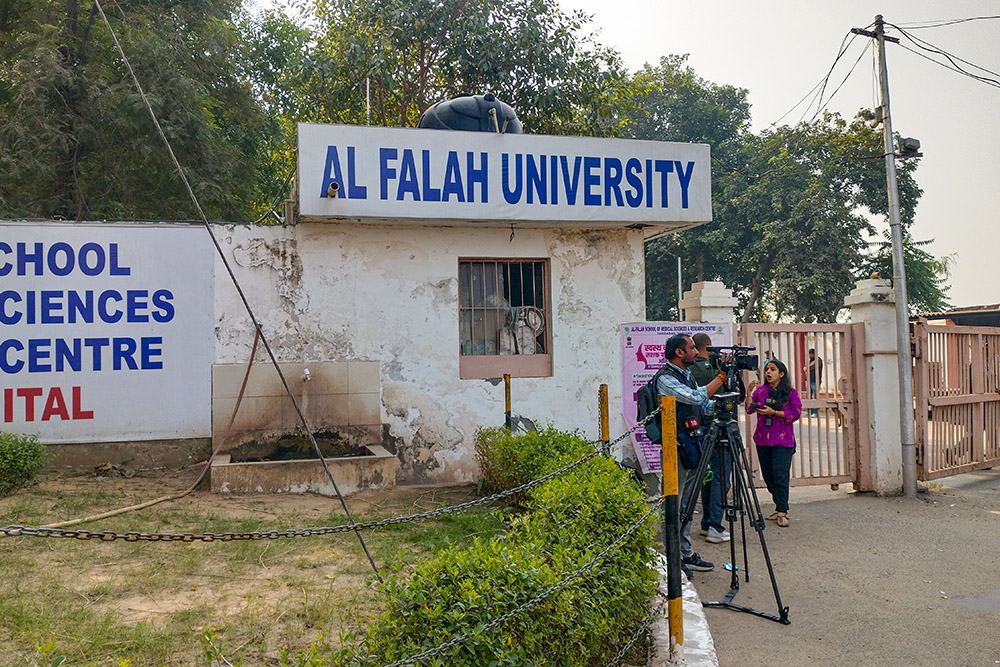There is confusion in the air. At least for the consumers, who are being bombarded with conflicting signals. After all, powerful groups have opposed the introduction of CAS (conditional access system), supposed to be introduced on July 14. For the technology will change the way a cable home views its soap operas, sitcoms and news.
At the moment, the viewer is figuring out how CAS, under which he'll have to pay a minimum rate to watch free-to-air channels (a minimum of 30) and additional amount for the pay channels, will impact his pocket. But powerful sections have already criticised the technology itself. And it seems that the politics of CAS will really determine its success or failure, and not its real economic benefits or disadvantages.
Just look at the scenario. Political parties have voiced their concern over its introduction. Obviously politicians like Venkaiah Naidu, the BJP president who has said that CAS will be introduced only if it's "people friendly", have an eye on the coming assembly polls. They don't want voters to be peeved for any reason.
That explains why Delhi chief minister Sheila Dikshit, too, has said that "it (CAS) is not acceptable to us in its present form". For her, it doesn't matter whether the technology is good or bad. What matters is whether the opposition can gain brownie points by creating a controversy before the assembly polls, due this year-end.
Anyway, we shouldn't forget that most of the broadcasters (except Zee, perhaps) don't want CAS in any form. Their logic: if CAS comes in, their viability will be under a cloud. Once again, the pros and cons of the technology is not a concern. At present, broadcasters charge for their bouquet, rather than individual channels. Some of the stand-alone channels, like ndtv's two news channels, are free-to-air.
Under CAS, broadcasters will have to specify the status of each channel, whether it's free or paid. That's a tricky decision. For if a channel is free, there are no subscription revenues. And if it's pay, and consumers don't watch it, it'll also impact both the toplines and the bottomlines. In the current regime, broadcasters earn subscription revenues for the entire bouquet and don't have to make such critical decisions.
Once CAS is on, the real TRPs of the pay channels will be visible. Today, due to the bundling, broadcasters can claim high TRPs. But once a channel becomes pay, its real viewership will be evident since the number of consumers who are paying can be monitored. Hence, there's a fear that the real TRPs, if low, will adversely impact advertising revenues. That's another hit on the bottomline. Says Peter Mukherjea, CEO, Star India, "We should delay CAS and launch it after all glitches are removed."
We also have the cable operators, who don't like the new system either. For years, the local operators have been fooling cable distribution companies (such as Hathway, Siti Cable and InCable) about the actual number of subscribers they have. By understating this figure, the cable operators end up earning free profits and cut into the latter's revenues. With CAS, this is difficult.
Cable operators contend there are technologies available to feed multiple households through a single set-top box, which will be required by customers to unscramble the signals of the pay channels he wishes to watch. Hence, under-reporting of subscribers is still possible. And then, operators or subscribers could always buy compatible boxes from the open market and, thereby, avoid detection by cable distributors.
It's in this environment that one should gauge the criticism against CAS. For, once you have such powerful segments ganging up together, there's bound to be misinformation. In fact, it's happening right now.For instance, there's a belief that consumers would shell out more under CAS. While this was true a few weeks ago, the scenario has changed.
A major investment the consumer has to make is for the set-top box. A box would have cost him Rs 7,000 earlier, but with the reduction of the import duty, the price is likely to fall to Rs 3,500-4,000. More importantly, cable distributors are offering sweet deals. One of them is willing to give the box for a returnable deposit of Rs 1,000 and a Rs 30 per month rental. So, the costs have really come down.
Large distributors also assert that the monthly bills for subscribers are likely to fall. Here's how: the government has fixed a ceiling of Rs 72 per month for a minimum of 30 free-to-air channels. Add another Rs 20 as tax and an additional Rs 50-60 for subscribing to the pay channels. That comes to a maximum of Rs 150 per month, compared to the present cable charges ranging between Rs 150 and Rs 350.
What's important is that given the tussle for eyeballs, which will be transparent under CAS, broadcasters cannot charge a high price for pay channels. In fact, they may be forced to make a large proportion of their bouquet as free-to-air. To cite an example, almost all the Hindi and English news channels have become free-to-air. And the charges for most pay channels may not be more than Rs 10-20 per month per subscriber. (Of course, if a consumer insists on watching all the channels available, his monthly bills are likely to shoot up.)
Another concern for the consumer is that CAS is operator-specific and, hence, location-specific. So, if one wants to shift his house or city, he may have to invest in a new set-top box. But this, too, will change, and fast. Already distributors are offering the choice of returning the box and taking back whatever deposit has been paid. So, the only money one loses is the monthly rental that was paid for the box. What's better is that distributors are discussing how to exchange consumers. "If some customers leave us, there will be others who will join us from areas under our competitors. So, we can exchange such consumers, thereby having no impact on the latter," explains a senior manager in a distribution firm.
Still, the customer will continue to remain at the mercy of the cable operator. Today, the viewer can only watch the channels that the operator wishes to offer. CAS is unlikely to change that. However, in that case, the cable distributors say they are willing to educate the operators and ensure such things don't happen.
The worst fear is that CAS will restrict the consumer to a single technology without giving him any choice. That's important since another technology—DTH or Direct To Home—is around the corner. In DTH, he subscriber needs a small, pizza-sized dish antenna to receive the signals and a decoder (set-top box) to unscramble the encoded signals. And, three Indian companies—Zee, Agrani (Zee through another name) and Space TV (a Star TV-backed venture)—have the licences to start DTH. In fact, the Zee group plans to start its services from August 15 this year.
Even Doordarshan (Prasar Bharti) is giving final touches to its DTH blueprint. Sources say that on April 9, 2003, its board cleared the project, which envisages an investment of Rs 500 crore over the next five years. Others like Siddharth Ray, who has promoted Data Access, an internet and telecom player, plan to provide a DTH platform by the end of the year. What it means is that any broadcaster can use this back-end infrastructure to beam his signals to the subscribers. This is exactly what happens in both the US and Europe.
So, will CAS block out DTH? Well, yes and no. Yes, because once a consumer is hooked on to CAS, it'll be cumbersome for him to switch to DTH.But then, at the same time, he can always return his CAS set-top box to the operator, collect his deposit and invest in DTH. In the end, it'll be pricing and convenience that'll decide which technology will triumph. But before that, the government will need to clear its stand on CAS itself.
Inside The Boxing Ring
The politics of CAS will determine its success or failure. The pluses or minuses don't count Updates

Inside The Boxing Ring
Inside The Boxing Ring
Published At:
MOST POPULAR
WATCH
MORE FROM THE AUTHOR
×








.jpg?auto=format%2Ccompress&fit=max&format=webp&w=376&dpr=2.0)












